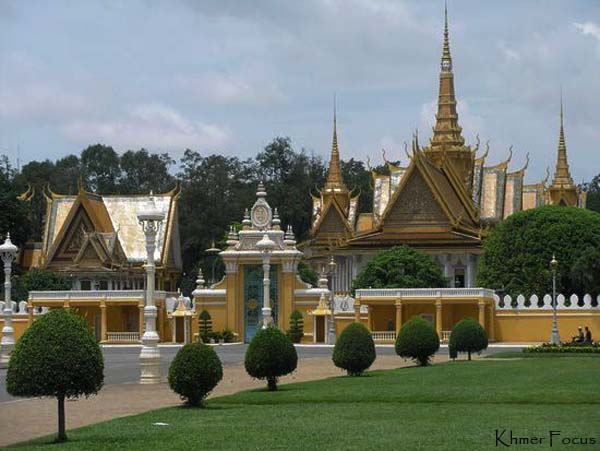The Royal Palace and the Silver Pagoda sit margin by margin on the riverside, and while they are two separate complexes they are visited as single, preliminary with the Royal Palace and next continuing against the Silver Pagoda. Approaching the development you will notice the walls painted vivid yellow to be Buddhism, and white representing Hinduism, the two chief faiths of Cambodia until they were combined into single by Jayavarman VII in the 12th century.



At this use the dominating figure is the golden spired Chanchhaya Pavilion, used as a venue representing Royal Dancers, as a tribune representing the queen to take in hand the crowds, and as a place to retain state and Royal banquets. Once inside the Palace reason, street sounds are silenced by the towering walls and the various Royal buildings sit like ornate islands rising from the composed, manicured tropical gardens. Except representing the area of the genuine Royal residence, the Khemarin Palace (if the blue royal flag is snatched the queen is in residence), nearly everyone of the Palace reason and Silver Pagoda are direct to the broadcast. Surrounded by asian grandeur you cannot fail to notice the strangely passй of place, grey, mostly cast-iron, grand building – this was a organize from Napoleon III in 1876.

The Silver Pagoda's proper assign is Wat Preah Keo Morokat, which income 'The Temple of the Emerald Buddha,' but it has customary the general moniker 'Silver Pagoda' in imitation of the 4000+ solid silver tiles with the aim of put together up its floor. The walls of the pagoda are abundantly decorated with colourful frescos depicting episodes from the Khmer version of the Ramayana. The main use of the pagoda is the hefty green Buddha sculpture – the Emerald Buddha. Standing in front of the Emerald Buddha is an alternative taller, solid-gold Buddha weighing 90 kilograms and caked with in excess of 2,000 diamonds. The pagoda compound as a in one piece contains several structures and gardens, plus a collection, various stupas, shrines, monuments, and minor buildings, as well as the equestrian sculpture of queen Norodom which was resolved in place in 1892. Also worth looking by the side of are the development walls with their abundantly decorated frescos depicting episodes from the Khmer version of the Ramayana.



